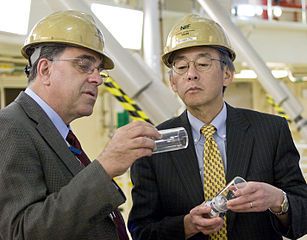ARPA-E and Stimulus Money for Cleantech

I was glad to see a section on Solyndra, the proverbial elephant in the room, which echos what I always tell people: there really is nothing shocking about a loan guarantee like this going south. Solyndra failed when the price of competitive solar PV technology fell through the floor; the company had been backed by $1 billion in private capital, and swarms of investigations determined there was no malfeasance here whatsoever. The expectation that all bets on cleantech will be winners is idiotic; if these deals weren’t speculative at some level they wouldn’t have required loan guarantees in the first place.
The only real issue I have with the ARPA-E program is that it favors huge, stodgy and bureaucratic organizations that can afford the lobbyists that are required to pressure the committee into making the allocation. This is the precise opposite of its ostensible mission, i.e., to fund nimble and innovative companies and their ideas.
I’m reminded of what I would do if I had the power: identify a couple of hundred good ideas that, if they can get off the ground, will be on a trajectory to produce a meaningful amount of clean energy or reduce the consumption of a meaningful amount of “dirty” energy. Doty Windfuels is the textbook case, but there are numerous other solid cleantech investment opportunities. I’d give them the funding they need, and then monitor their progress closely, providing additional support where indicated.
Are we close to making that happen, in its purity, given the real world of politics? No. But we’re a million miles nearer than we were four years ago.

“…The expectation that all bets on cleantech will be winners is idiotic; if these deals weren’t speculative at some level they wouldn’t have required loan guarantees in the first place.”
Why should the taxpayer be funding speculative projects?
If the investment is not solid, it should be allowed die like the Stanley steamer without taking down the taxpayer.
Why should the tax payer be the first to take a hit when the speculative projects fail? I think that the private investors should be the first to take the hit.
Why should close advisors to the president and others in Washington be able to pick projects promoted by their friends? There should be at least an armslength separation from politicians and these project folks. It seems they are actually in bed with them. Enough.
Thanks Craig,
Obviously, we agree here. The idea that WindFuels is not getting support while absurd concepts like algae fuels and hydrogen fuel cell vehicles are getting support shows that something is clearly rotten here.
I don’t know how many other completely clear examples there are, but I’m sure that we have not exhausted American ingenuity – yet our government refuses to invest in any technology that wasn’t imagined during Carter’s presidency. There are problems here…
But no-one should ever imagine that government should not be involved in R&D for new paradigm-changing technologies. Certainly every other industrialized country is investing heavily in its technology, so if we refuse to do so we will simply fall further and further behind.
What is necessary is to figure out how to invest our money more wisely. Wasting the money on projects like Soylindra – something that anyone with a calculator and the back of an envelope should have known would fail 6 years ago – only hurts… because it makes people less enthusiastic about investing in areas where it would do some serious good.